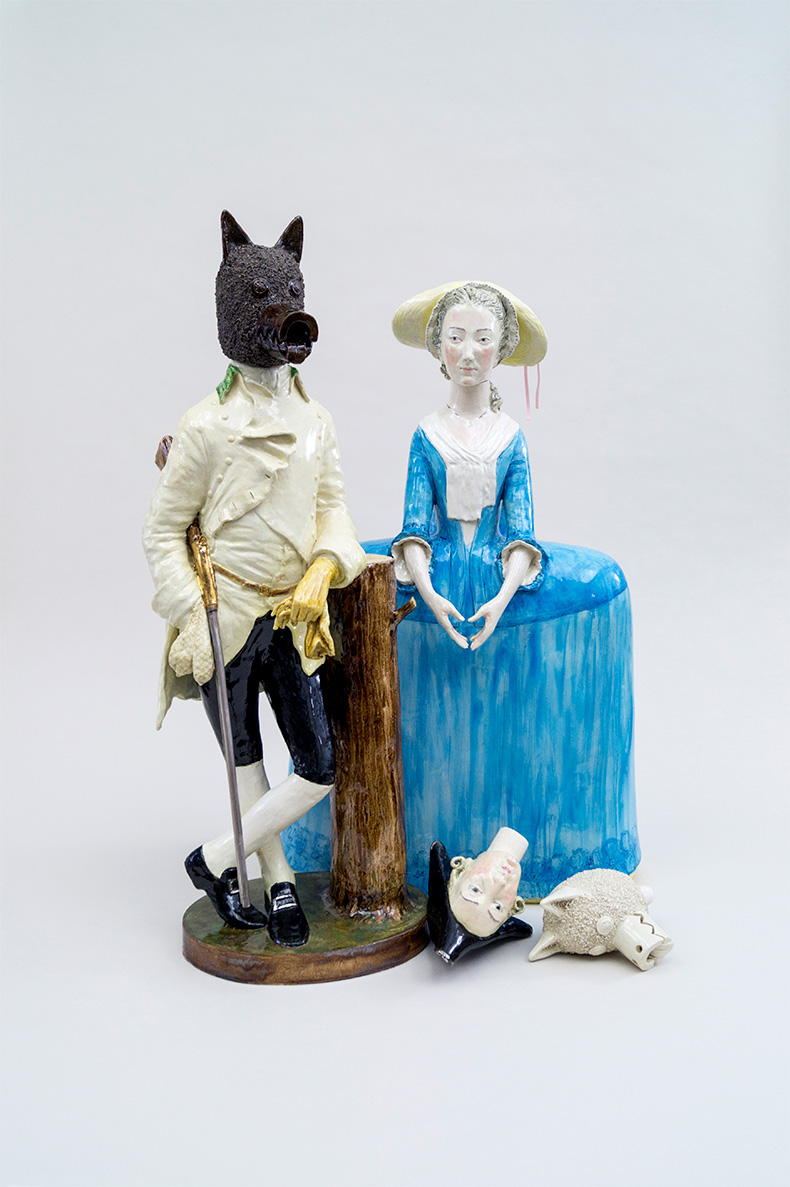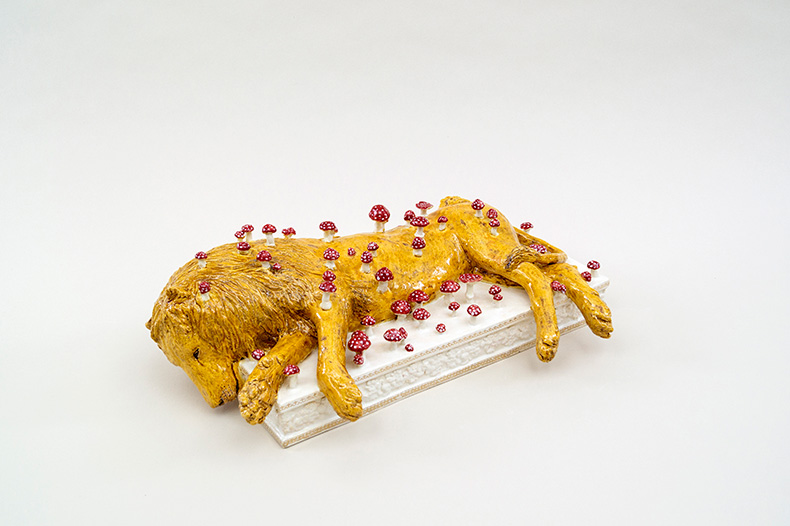Stephen Ellcock has made a name for himself through his Instagram account @stephenellcock. He consistently posts an astonishing number of works of art from a broad spread of artists and eras. For a recent example, on 26 June, shortly after the overturning of Roe vs Wade by the US Supreme Court he managed six posts and within these six posts he managed 28 images. The subject of the posts ranged from a medieval depiction of Margaret of Antioch, who was tortured for her refusal to marry, smashing a demon over the head with a hammer, to Jenny Holzer’s Inflammatory Essays, politically inspired text pieces from 1979–82. Compare this to the most followed account on Instagram, which is that of Cristiano Ronaldo. On the 27 June (he took 26 June, a Sunday, off) Ronaldo posted for his 460 million followers an image of him and his mum with their thumbs up and grinning to the camera.
Ellcock has now focused his vast knowledge of images on one subject as he tries to define the concept of ‘Albion’ in England on Fire, A Visual Journey through Albion’s Psychic Landscape, a book which he has co-authored with Mat Osman (the novelist and bassist in Suede), who has written introductions to each chapter. At a recent event at Foyles bookshop in London, Ellcock described his selection of artworks as being political, being motivated by his own feelings of the claiming of Albion and ‘English’ identity by the political right. He chose ‘England’ for the title, he explained, because he didn’t want to implicate the Welsh, Scottish or Irish in the possibly futile quest for a definition of what he feels is a uniquely English vision.

Mr and Mrs Andrews (2021), Claire Partington. Courtesy James Freeman Gallery; © Claire Partington

Mr and Mrs Andrews (c. 1750), Thomas Gainsborough. National Gallery, London
The vision of Englishness Ellcock sets out to explore isn’t the typical one. Instead of Gainsborough’s Mr and Mrs Andrews, with its depiction of a young landowner and his new wife looking over their idyllic, inherited countryside, we get Claire Partington’s ceramic figures of the couple, in a work also called Mr and Mrs Andrews (2021). Here, however, Mr Andrews’ head lies on the floor, his head replaced by that of a wolf. although Mrs Andrews keeps her human head, a wolf’s head lies at her feet, too.
Throughout, Ellcock’s choice of works looks to skew tropes which might have defined Englishness in the past. A deck chair is shown on the beach at St Ives in a photograph by Jeff Pitcher, but it sits empty with its fabric ripped apart and the sky above is grey and stormy. Pitcher has shot the stricken deckchair from below so that it towers over the viewer as a monolith – perhaps from a time when the English seaside was a better place, or it could stand for an ideal seaside that never existed, or not in the way the postcards suggest.
Osman’s introductions describe an experience of wandering through a dream-like England. Rather than grounding the chapters, however, Osman conjures up a scene of the ‘psychic landscape’ to which the book’s title refers. In the section on ‘Stones’ Osman writes, ‘En*la*d *s c*d*’. A code for which the key is lost, with stone rings for dots and carved lintels for dashes. In the rest of this chapter, Ellcock presents the idea of Albion as one of perception rather than anything real. He includes Devil’s Den, a painting by Ben Edge, in which a devil is shown with two ox trying to remove the capstone from a Neolithic burial chamber. It’s a painting based on a folk tale about the stones of the grave chamber near Avebury. Ellcock’s caption points out that through the spreading of such stories the Church linked pre-Christian monuments to the devil to try to nullify their significance. The following spread, however, shows two photographs of stone put to use in the building of Christian monuments, at Wells Cathedral and Glastonbury Abbey. Glastonbury Abbey is shown overgrown and forgotten just like Edge’s Neolithic burial chamber.

The Red Lion (2021), Claire Partington. Courtesy James Freeman Gallery; © Claire Partington
When asked for a favourite work in the book, Ellcock chose The Red Lion by Claire Partington. It shows a lion, described by Ellcock as ‘a potent symbol of the British Empire’, lying prone on a plinth as mushrooms begin to grow from it. New growth from an old symbol seems an apt in a book that goes some way towards presenting an idea of where English art should be going, after the statues of the peers of Mr and Mrs Andrews have been pulled down.
England on Fire: A Visual Journey through Albion’s Psychic landscape is published by Watkins Publishing.














![Masterpiece [Re]discovery 2022. Photo: Ben Fisher Photography, courtesy of Masterpiece London](http://zephr.apollo-magazine.com/wp-content/uploads/2022/07/MPL2022_4263.jpg)
‘Like landscape, his objects seem to breathe’: Gordon Baldwin (1932–2025)